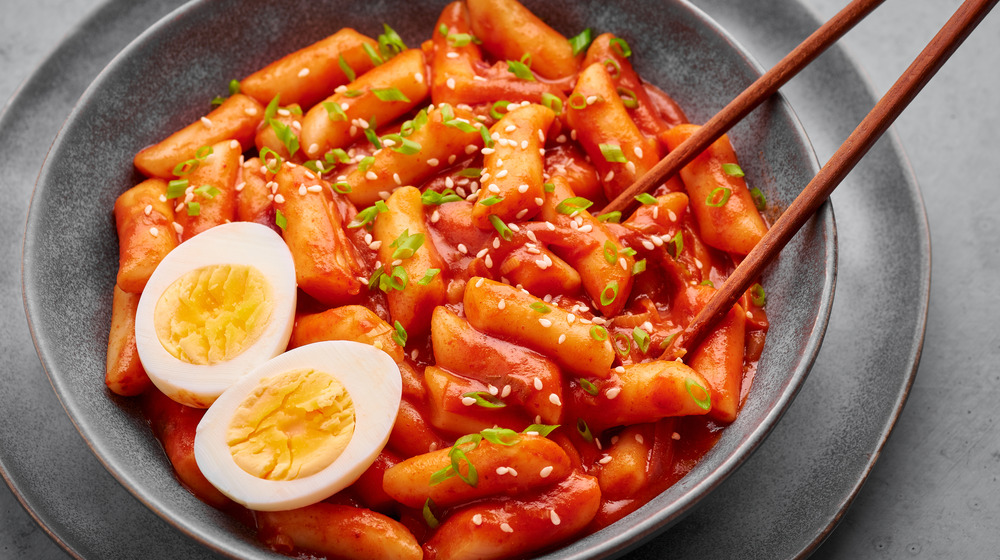What Is Tteokbokki And What Does It Taste Like?
If you haven't heard of tteokbokki before, you're in for a real treat. The sweet and spicy Korean street food is a classic snack beloved by people of all ages, according to Korean Bapsang.
Tteokbokki has all the elements of a mouthwatering snack: sugar, spice, a tangy and garlicky sauce, and deliciously chewy rice cake pieces. It serves as an excellent comfort food and is highly customizable, allowing you to add or change ingredients to perfectly fit your palate. As an example for those who fear a lot of heat, using gochujang without any added gochugaru, or red chili flakes, will tame the spice but keep all the flavor (via Korean Bapsang).
The base of tteokbokki sauce is, perhaps surprisingly, a broth created from dried anchovies, kelp, and mushrooms for some intense umami flavor. Crunched for time? Delish says you can easily substitute with vegetable or chicken broth. The same goes for the sweetness, opt for honey or brown sugar instead of corn syrup for a sweet-but-slightly-different flavor.
Try a variation on traditional tteokbokki
While more traditional takes on the dish (like Korean Bapsang's recipe) maintain the chewy and smooth consistency of the rice cakes and green cabbage, other variations like to add a different texture to the mix. Bon Appétit's version, for example, sears the rice cakes to add some crispiness and uses bok choy for an added crunch. The great thing about tteokbokki is its versatility in what you can add or take away to make it all your own.
In this collection of recipes from Food & Wine, you can find a marinade from chef Eunjo Park that lends itself to tteokbokki, as well as a multitude of other tasty Korean dishes. The soy and pineapple marinade is used for a more natural and tangier sweetness in the base, with honey added toward the end of the tteokbokki recipe. Some ginger and scallions are included in the mix for even more flavor, too. Basically, when it comes to this Korean comfort food, the world is your oyster — er... anchovy.

